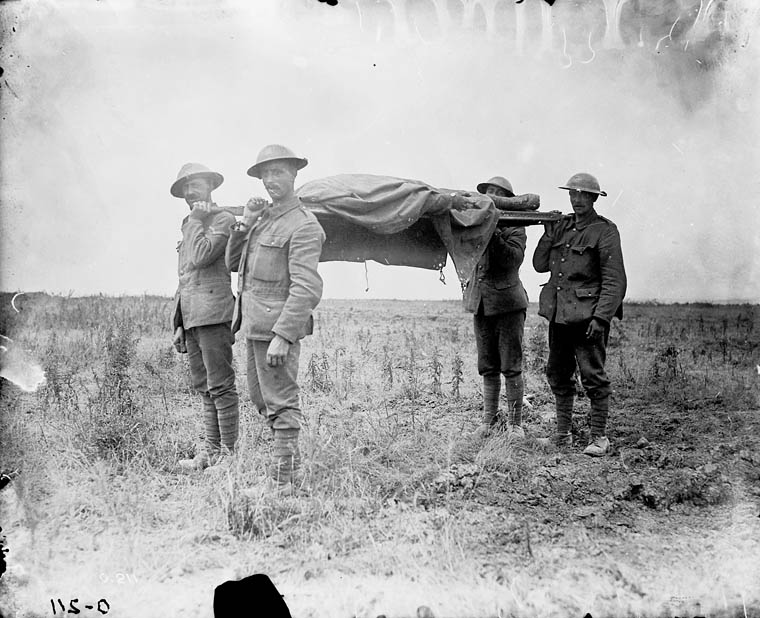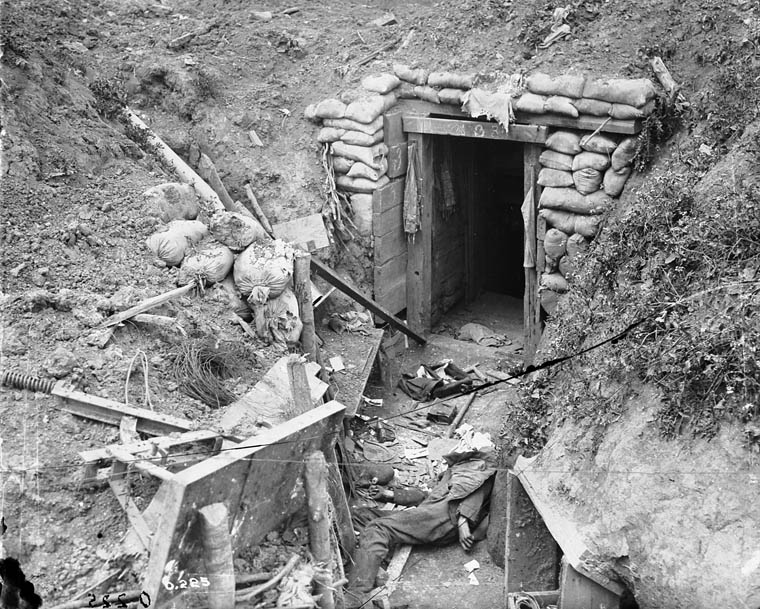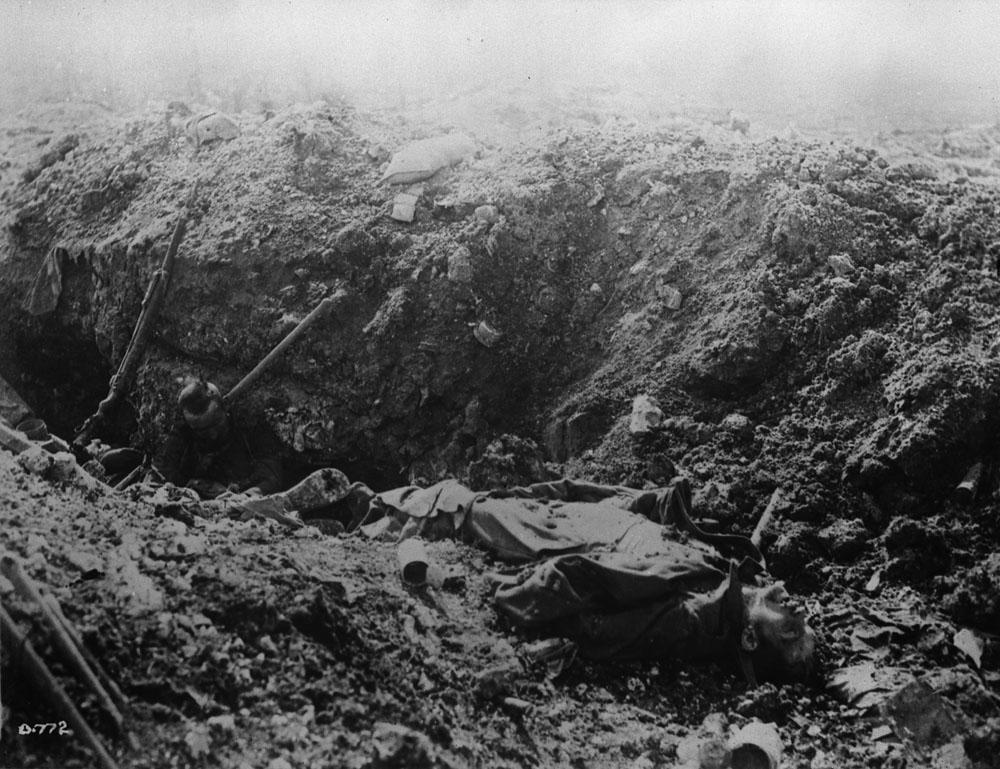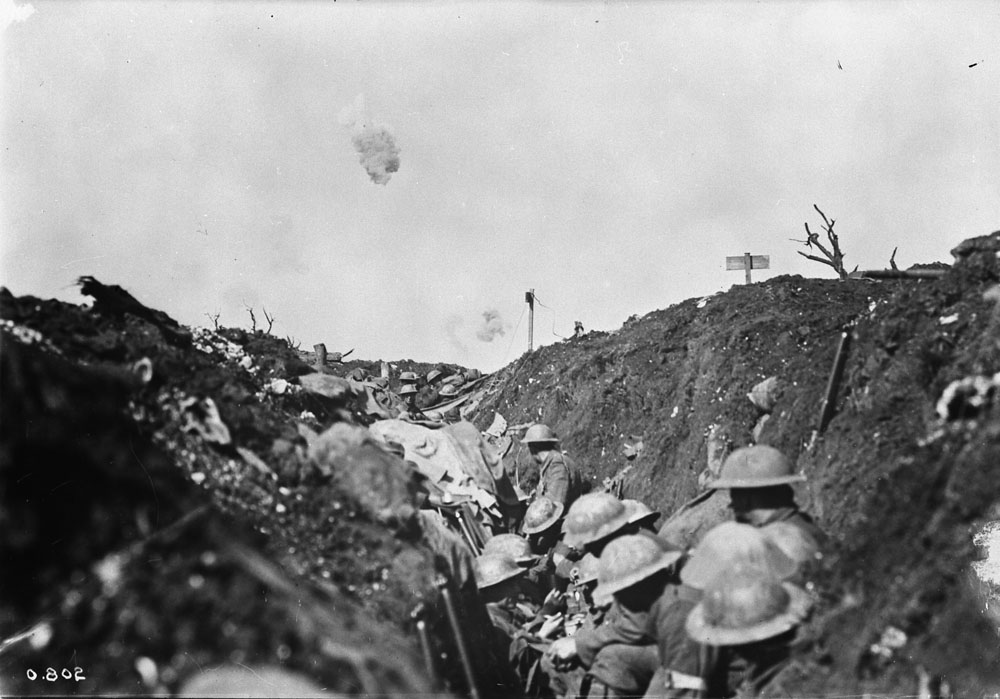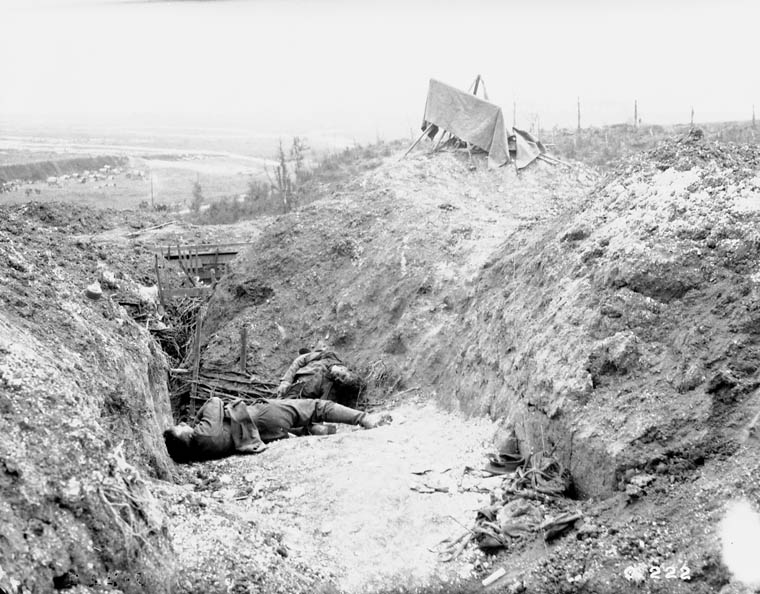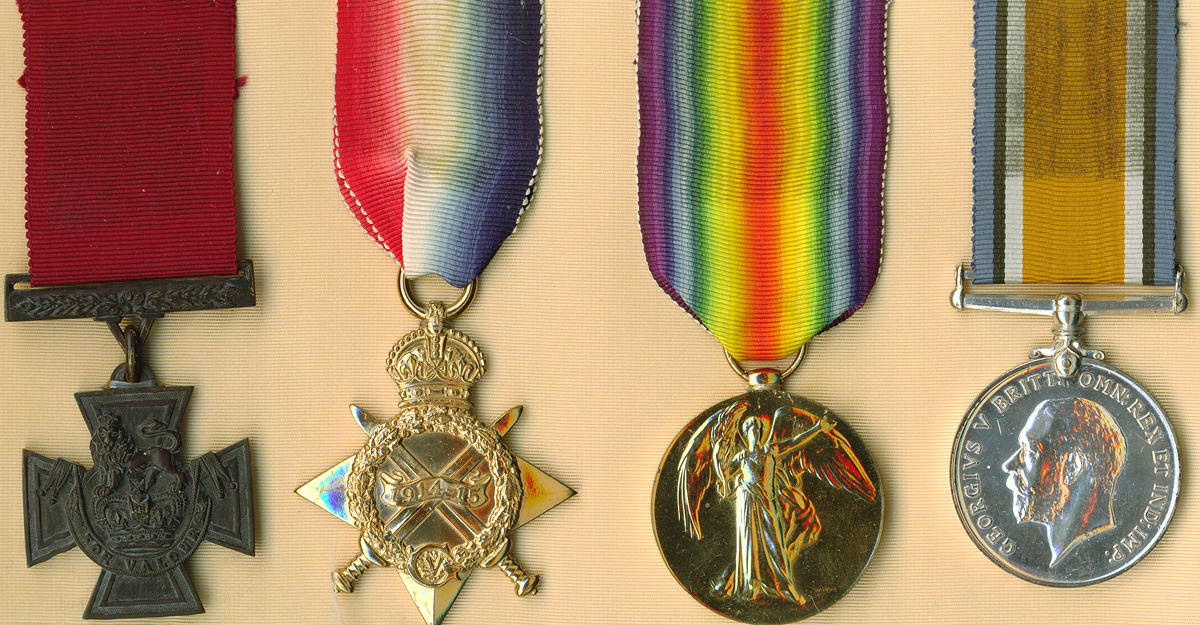It is one of the most haunting place names in history — a small, marshy French river — synonymous now with misery and death. In the summer of 1916, around the Somme valley north of Paris, the British Army began one of the largest campaigns of the First World War. Five hellish months later, more than one million soldiers, including almost 25,000 Canadians and Newfoundlanders, had been killed or wounded in a series of battles that gained little for either side (see Battle of the Somme).
"No one who lived through that time will ever forget the casualty lists of the Somme." G. H. Gretton, historian
Background
In 1916, the armies of Germany, France and Britain were in the third desperate year of stalemate on the Western Front. Soldiers huddled in a vast labyrinth of opposing trenches reaching 700 km from the North Sea to Switzerland. Hoping to end the attrition of trench warfare — to force the Germans back into a war of movement — the British planned a massive assault against enemy lines that summer. The attack would take place on a wide, 25 km section of the front in the Somme region of northeastern France.
Canadian troops had been fighting as part of the British army in Europe since 1915. The Canadians were already engaged further north, around the city of Ypres, Belgium, and were therefore spared the opening battles on the Somme. But the small colony of Newfoundland, not yet part of Canada, had raised 1,000 men as part of the Newfoundland Regiment for service at Britain’s side. The Newfoundlanders were on the front lines of the assault when the Somme offensive erupted on 1 July 1916.
“Materialschlact”
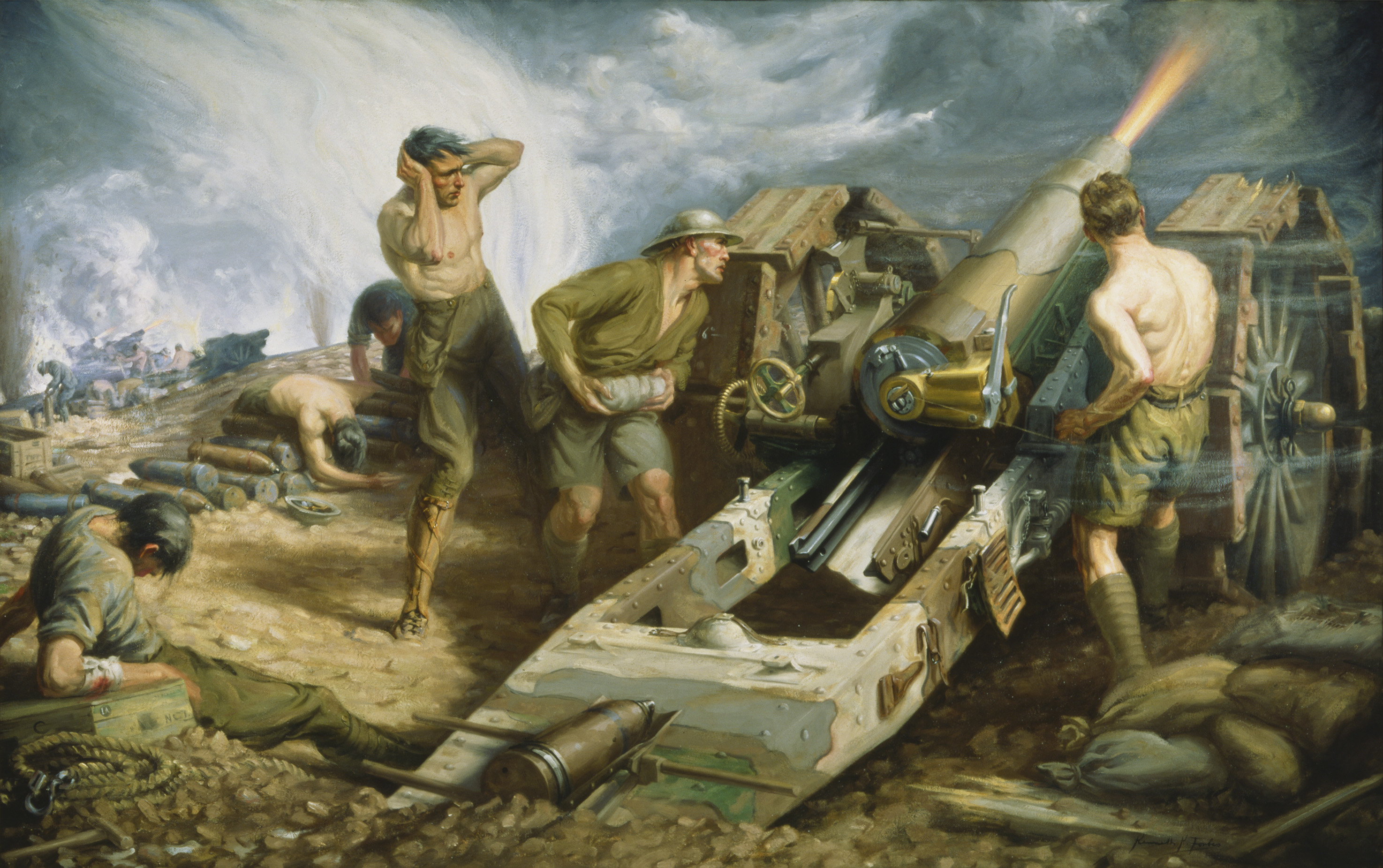
The British solution for overcoming German defences in the Somme was to shell the enemy into submission. Following the bombardment, the theory was that infantry troops would storm across no man’s land, occupy the destroyed German trenches and kill or capture whatever survivors remained. With more than 1,400 artillery guns, the British mercilessly pounded the German lines for a week before the assault. The German official history of the war says that for ordinary soldiers, the Somme was a terrible ordeal: they called it the materialschlact — the munitions offensive.
What the British didn’t know is that their shelling wasn’t enough. Most German soldiers simply huddled in deep dugouts until the artillery fire stopped, at which point they emerged, shaken but alive, to man their machine guns. Even worse, the bombardment failed to shatter the barbed wire so hazardous to attacking troops. When the offensive opened on the morning of 1 July, attacking British soldiers were met by a hail of enemy machine-gun fire as they struggled to move through rows of barbed wire untouched by the initial bombardment.
Beaumont-Hamel
At the northern end of the Somme front, near the village of Beaumont-Hamel, about 800 troops of the Newfoundland Regiment were gathered on 1 July in a support trench nicknamed St. John’s Road. They were part of a third wave of troops to attack German lines. At 9:15 a.m., the Newfoundlanders began their assault, crossing no man’s land in rehearsed lines. Out in the open, they saw that the first waves of British attackers had failed — the troops lying dead, or trapped in no man’s land, cut down by machine guns and artillery fire while trying to navigate a few narrow gaps in the barbed wire.
The Newfoundlanders pressed forward into this firestorm. Some were hit before they even reached the front of the existing British lines. Others died upon reaching the base of the Danger Tree, a prominent tree halfway between the British and German lines, where enemy bullets soon found them.
Less than 30 minutes after leaving their trench, it was all over for the Newfoundlanders. Small groups of survivors attempted in vain to fight on. Hundreds of injured men were left to fend for themselves on the battlefield through the night, where they died of their wounds or were killed by German snipers.
“Not a man looked back”
“Appalling loss of life was the result of the first day of the Somme along the whole front of the attack.… A fifth of the attacking force was dead, and some battalions, such as the Newfoundland Regiment, had ceased to exist. The magnitude of the catastrophe, the greatest loss of life in British military history, took time to sink in.” John Keegan, historian
Of the 801 men of the Newfoundland Regiment who fought at Beaumont-Hamel, only 68 were able to answer roll call after the battle. They were among 57,000 British troops killed or wounded on the opening day of the Somme campaign.
“There were no waverers, no stragglers, not a man looked back,” wrote British general Aylmer Hunter-Weston to the families of the men who died at Beaumont-Hamel. “[The] assault only failed of success because dead men can advance no further.”
Memorial Day in Newfoundland
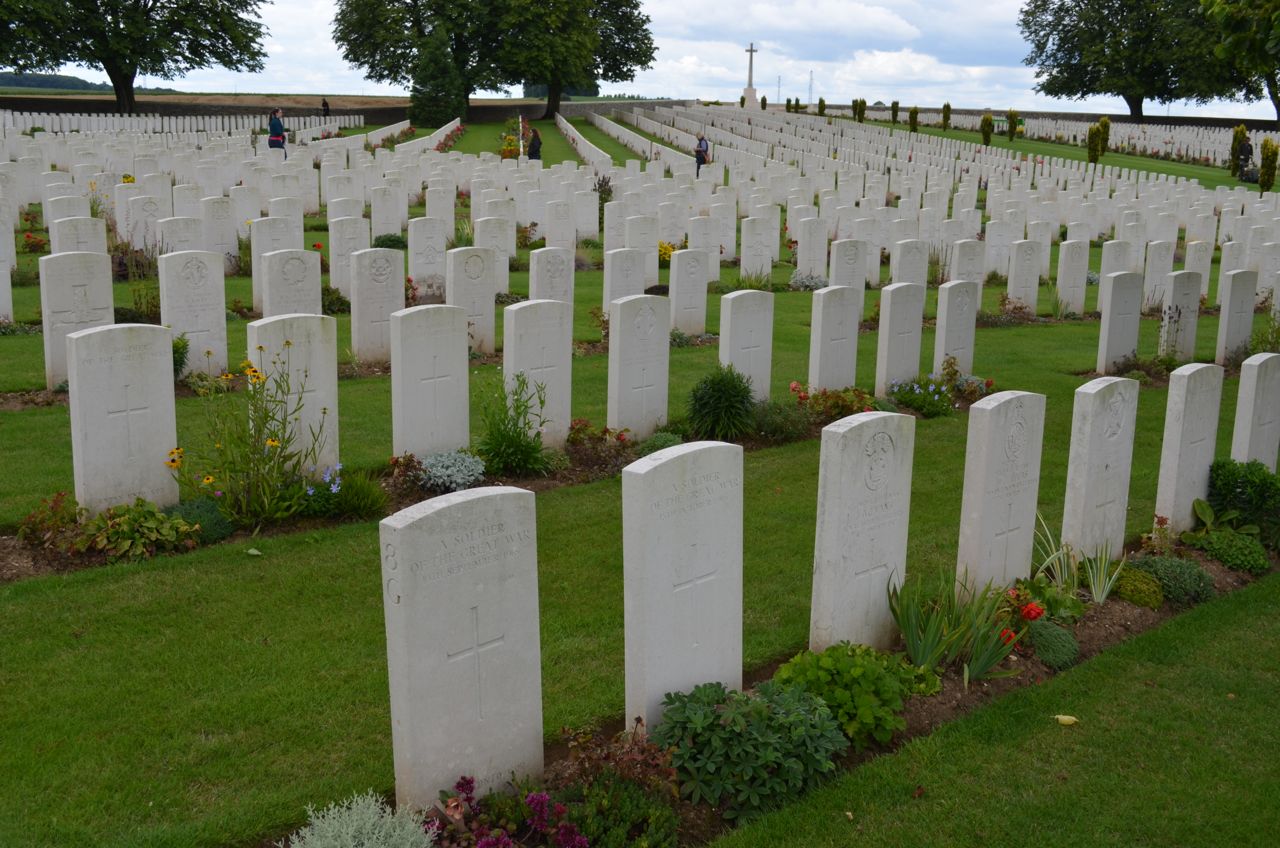
With reinforcements, the Newfoundland Regiment would go on to serve with distinction through the remainder of the war. In 1918, 17-year-old Private Tommy Ricketts became the youngest army soldier of the entire war to win the Victoria Cross.
More than 6,000 Newfoundlanders fought with the regiment in the First World War and more than 1,300 — one in five — were killed. This sacrifice and the particular trauma of Beaumont-Hamel left a scar that Newfoundlanders would never forget. Every 1 July, while Canadians celebrate their nation’s birthday, the people of Newfoundland gather instead for Memorial Day, to honour the sons and brothers who went to war in 1914.
Courcelette
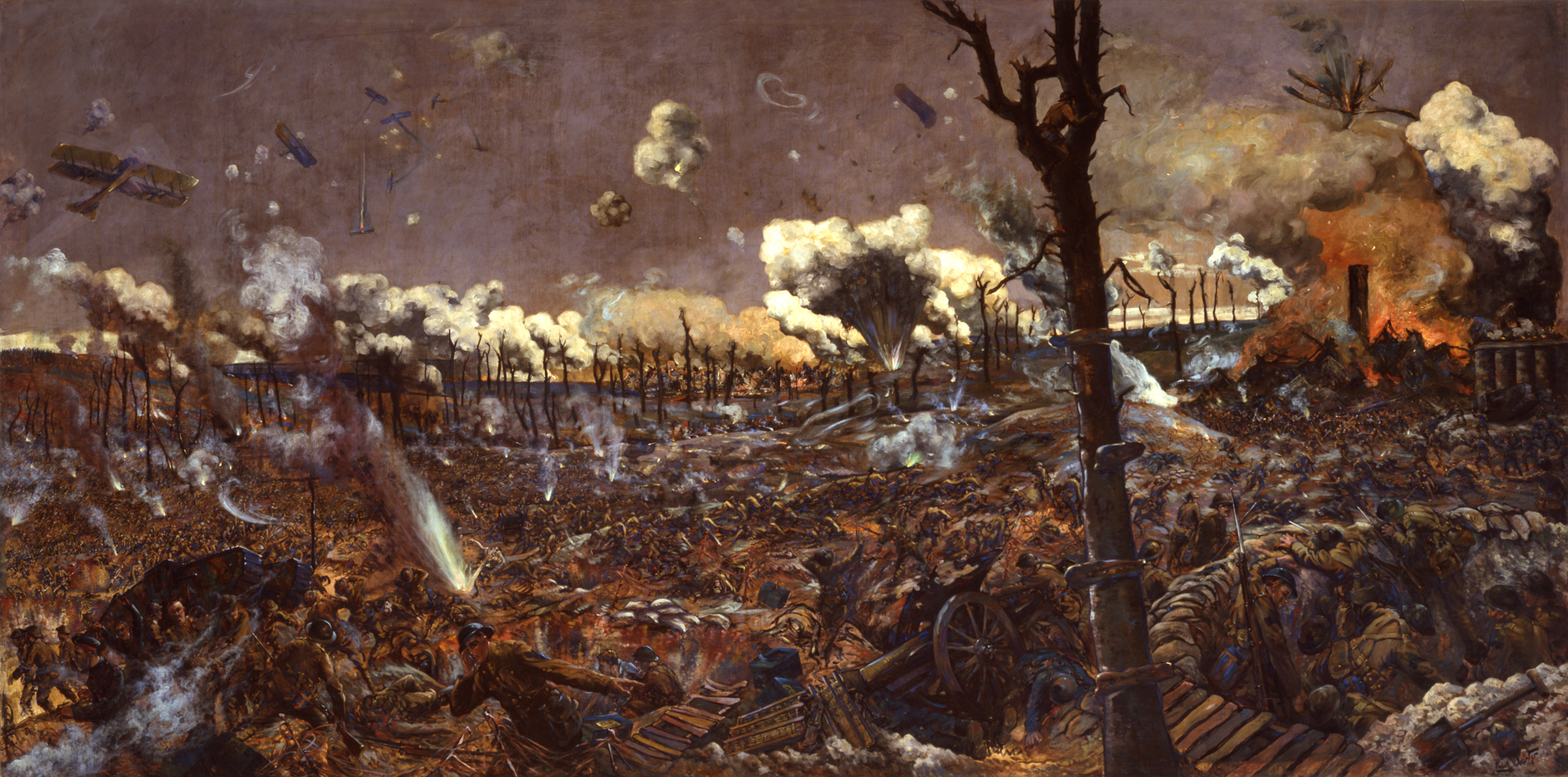
Despite the disaster of 1 July, the British high command continued the Somme campaign through the summer and fall. The three divisions of the Canadian Corps were spared from the slaughter until the end of August, when they were brought south from Belgium and installed near the ruined village of Courcelette (seeBattle of Courcelette. On 15 September, the Canadians launched a large-scale attack, capturing the remnants of the village and holding their new ground in the following days against German counterattacks.
The fighting continued through October as the weather grew colder, the battlefield wetter and the mud thicker. The Canadians tried several times to overcome a strongpoint in the German lines called Regina Trench, but were thrown back. Finally, on 11 November, a new, fourth division of fresh Canadian troops captured Regina Trench.
A week later, winter brought the Battle of the Somme to an end. The gains had been few but the costs great: more than 440,000 Germans had been killed or wounded, along with 614,000 Allied troops including a shocking 200,000 dead. Among the Allied casualties were nearly 25,000 Canadians and Newfoundlanders.
New Thinking
The Somme offensive was a failure. The appalling loss of life and the long casualty lists brought the horrors of the war home to Britain and its empire for the first time. But this failure forced military leaders to rethink their tactics on the Western Front, sparking a series of innovations that would eventually turn the tide of the war.
Tanks were tried on the battlefield for the first time, alongside the Canadians during the Battle of Courcelette. In addition, infantry command would soon be decentralized, with lower-ranking soldiers being encouraged to show leadership and use their initiative in the heat of combat.
The most important change was in the use of artillery. New shells would be designed to explode on contact with barbed wire, to rid the battlefield of this deadly menace. The creeping barrage was also introduced — a critical change that allowed soldiers to attack not in the wake of a prolonged bombardment but in the midst of one, with troops advancing just behind a moving wall of shellfire that would sweep steadily over enemy lines. Tried by the Canadians at Courcelette, these tactics would be expertly honed, expanded and used with success the following spring at Vimy Ridge, and later, during the Hundred Days campaign that ended the war. (See also Evolution of Canada’s Shock Troops.)
Home Front
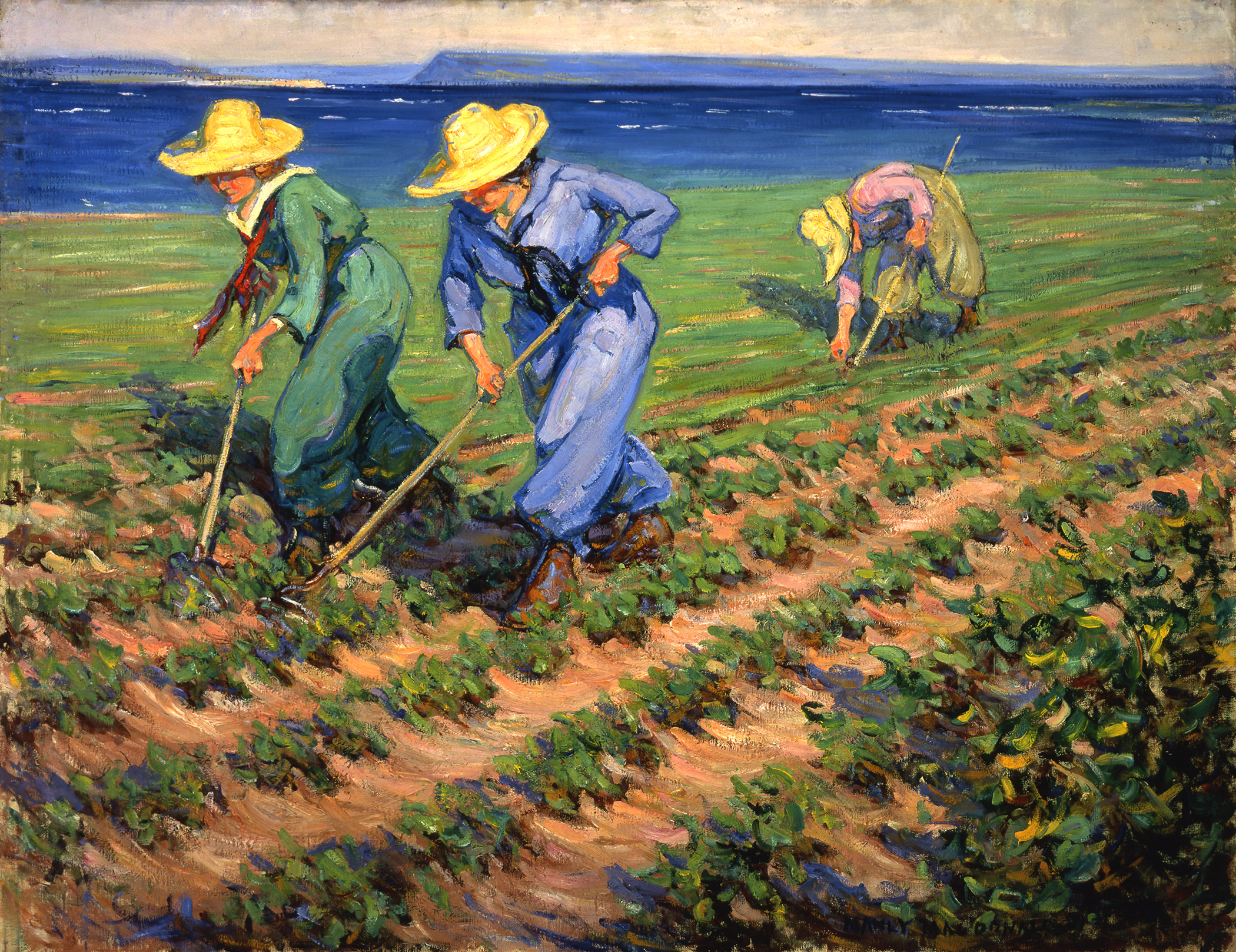
The casualties of the Somme campaign so depleted British Army ranks that renewed demands would soon be made on the British Empire, on Dominions such as Canada, for additional troops. This, as well as the Canadian Corps’ Somme casualties, would lead to pressures such as conscription that would deeply divide Canada in 1917 (seeElection of 1917).
The departure of men for the war effort also led to changes for women. Across the country — amid their mourning for lost loved ones, and their worry for sons, husbands and fathers at the Western Front — women took up the work of men, in factories, offices, and on farm fields. Nearly 3,000 women also signed up as nursing sisters with the Canadian Army Medical Corps.
The Troops: Leo Clarke
One of the Canadians who fought at the Somme was 23-year-old Corporal Leo Clarke of Winnipeg.
Clarke was a surveyor with the Canadian National Railway before enlisting with the Canadian Army. On 9 September 1916, while clearing a newly captured trench on the Somme, he single-handedly fought off a group of about 20 Germans, including one who attacked him with a bayonet. Clarke killed at least 18. A month later, Clarke himself was struck by a shell explosion and died of his wounds.
For his bravery on the Somme, he was awarded the Victoria Cross, one of three men awarded the VC from Winnipeg's Pine Street — renamed Valour Road after the war.
(Watch Historica Canada's Heritage Minute on Valour Road here.)
The Troops: Joseph Jessop
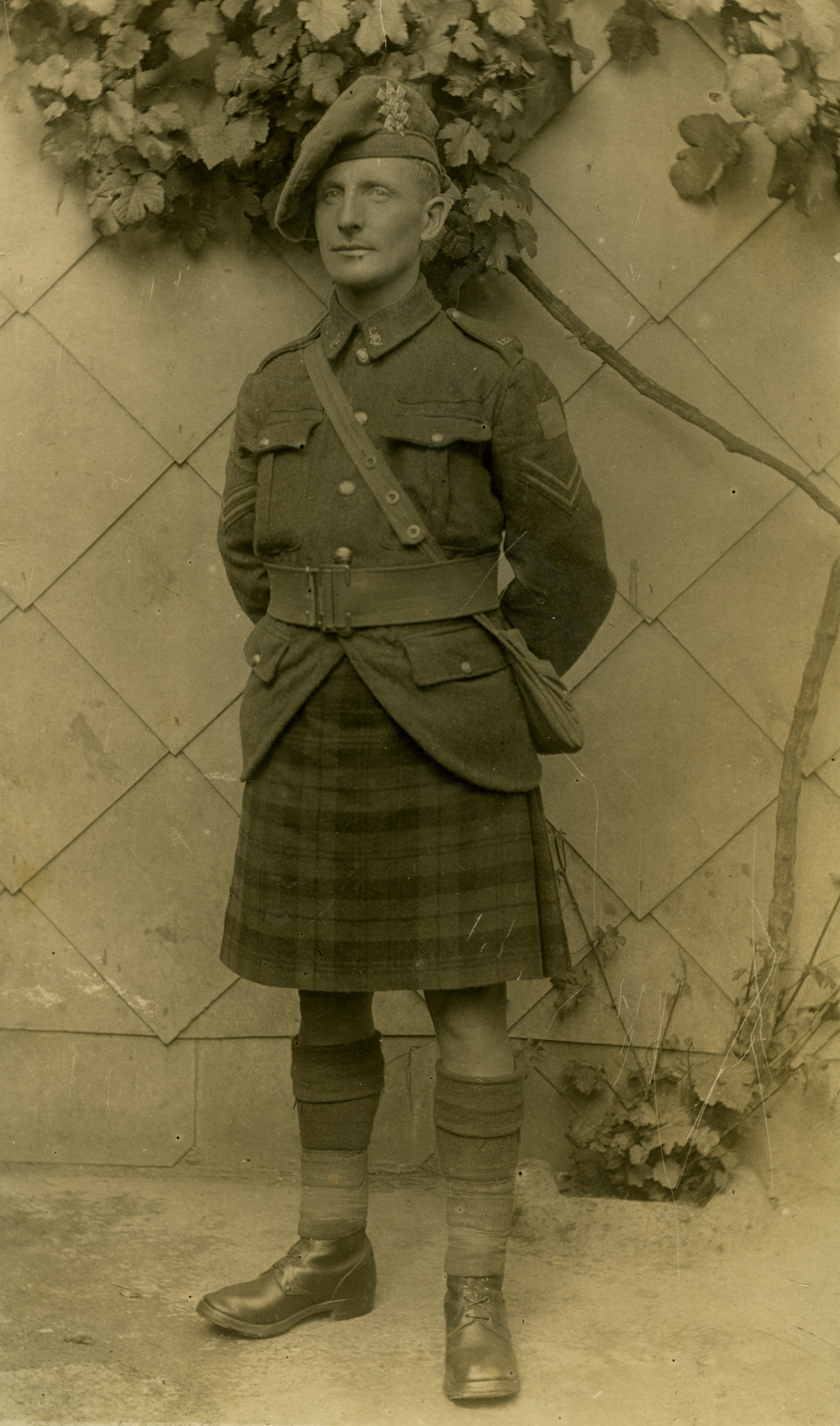
Joseph Jessop was a 30-year-old Montreal bricklayer, a husband and father of three, when he joined the Canadian Expeditionary Force in 1915. He enlisted under the alias John Dawson, for reasons that aren’t known, but later changed it back to Joe Jessop.
After months of combat near Ypres, Belguim — where he earned the Distinguished Conduct Medal for “conspicuous gallantry” — Jessop was on patrol in Courcelette when he was shot in the face and lost his left eye.
After months of medical treatment, he served with the 1st Quebec Regiment until he was discharged and returned to Canada in 1918.
The Troops: Herbert Irwin

Herbert Irwin had tried to sign up to fight at the age of 16, but his family found him and brought him home from the recruiting depot in Toronto.
The next year, he enlisted successfully in the Canadian Field Artillery. He fought at Ypres, the Somme, Vimy Ridge and Passchendaele. He once climbed into the belly of a dead horse to protect himself from enemy shellfire.
At the Battle of Amiens in 1918, he was wounded by a German shrapnel blast and returned to Canada — where he lived to the age of 85, telling his children and grandchildren about the war.
The Troops: Georges Vanier
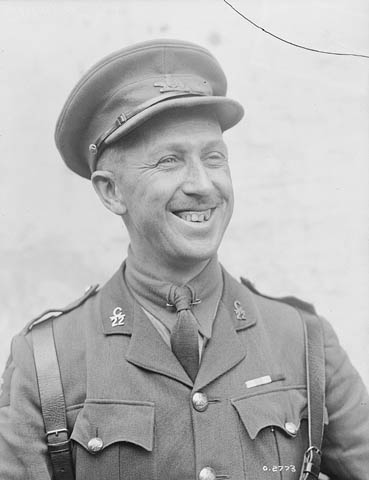
Georges Vanier was a young Montreal lawyer when he chose to fight for his country. In 1915, he became one of the founding officers of the 22nd Battalion (Van Doos). Having been injured in June, and returned to his unit in October 1916, Vanier lamented his battalion’s heavy losses at the Somme:
“It is hard to be very merry under these circumstances but it is necessary not to be downhearted, so we try to think of the present and of the living and not of the past and of the dead.”
Vanier was decorated for bravery in the war and was wounded in 1918, losing a leg. In 1959, he became the first French Canadian to serve as governor general.
Remembrance

Examine almost any of the cenotaphs across Canada that honour the losses of the First World War, and you will find the word Somme engraved on their sides. Canada’s sacrifices at the Somme are also commemorated in France — at a memorial in Courcelette and in the names of soldiers carved into the white walls of the Vimy memorial, which honours the more than 11,000 Canadians who died during the war in France with no known grave (seeMonuments of the First and Second World Wars).
But perhaps the most poignant reminder of the slaughter on the Somme is the Beaumont-Hamel Newfoundland Memorial in France, a Canadian national historic site, where a skeletal replica of the Danger Tree highlights the spot where dozens of Newfoundland soldiers died on that terrifying morning. A bronze statue of a caribou — symbolic of the Newfoundland Regiment — rises above the battlefield pockmarked by shell craters and the still-visible lines of century-old trenches.


 Share on Facebook
Share on Facebook Share on X
Share on X Share by Email
Share by Email Share on Google Classroom
Share on Google Classroom





